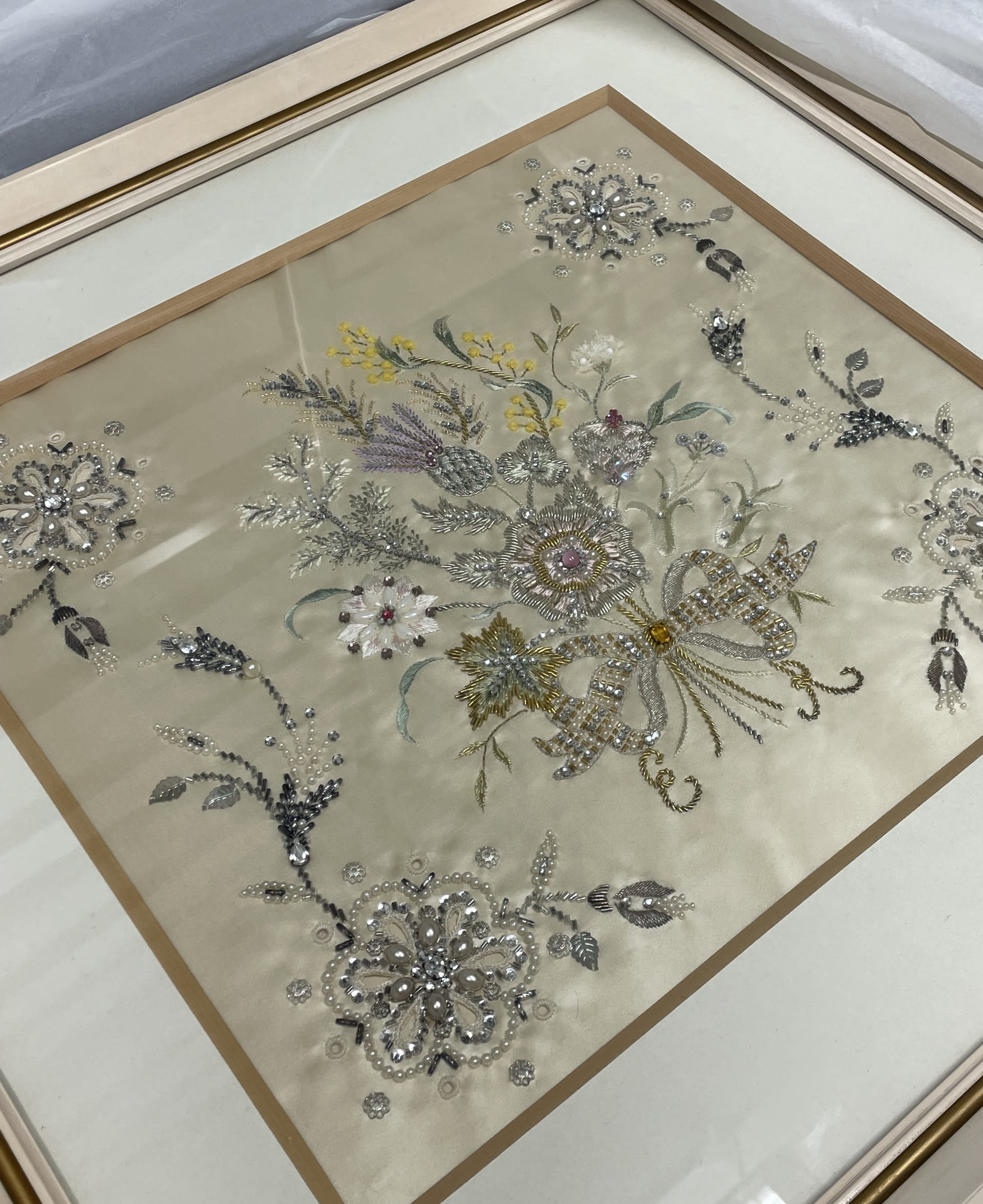Aaron Sobetski is an American artist, fashion designer, historian, and storyteller living and working out of London.
I’ve used these tobacciana in the making of several garments during my undergrad and design career. I started using the cigar felts in 2018, after my grandpa gave me his collection of them. I archived and catalogued over 400 felt flags, and used the repeated flags to make a kimono jacket and trouser set. They were printed from the 1880s-1914 for American tobacco to slide into cigar boxes(felts) and cigarette packs(silks) until the rationing of fabric started the use of cards. They were the original baseball cards in a way. In pretty much every art museum and World War I museum in America you can find a quilt made out of the felts, and you can find doll house blankets and couch pillows using the silks. They came in many different themes like animals, flowers, fruit, etc., but most commonly flags. At the beginning of covid I started making cigarette silk masks using florals and ceramic silks I had acquired for my collection. I also made a denim workwear coat made out of the silks as well.
To be honest, the silks and felts are what got me interested in History of Design and museum collections. If it weren't for the practice and multiple internships I got to learn how to keep control of them, I wouldn't have gone into this programme.
Image: 1880s cigarette silks and heraldry(Private Collection, Photo by Aaron Sobetski).





